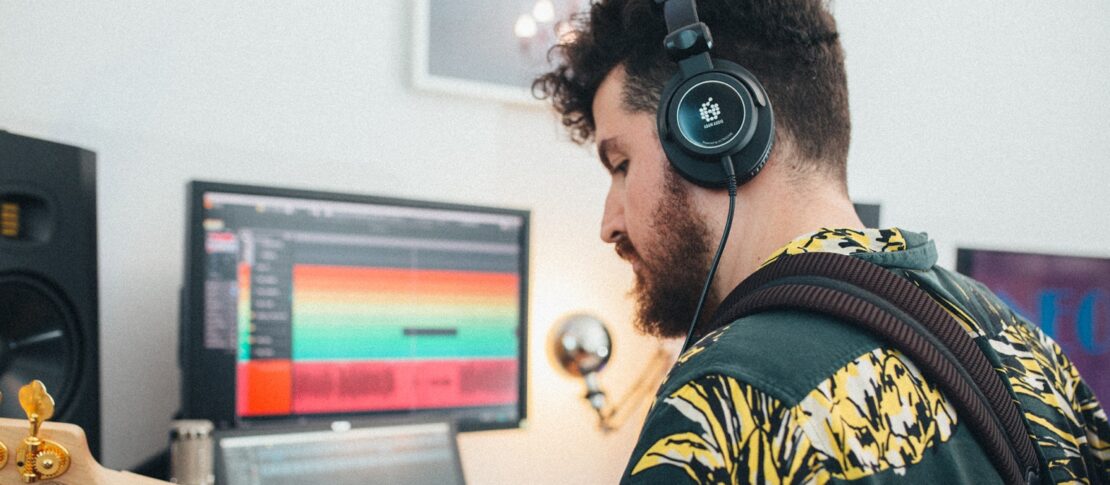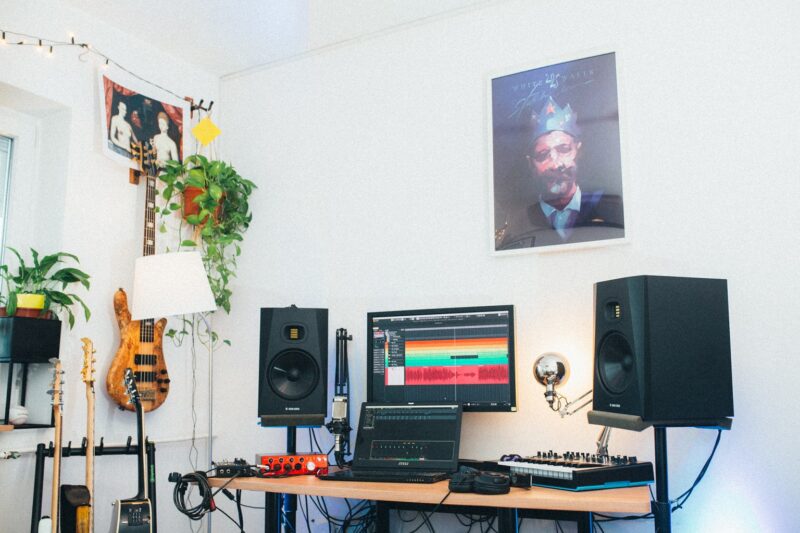
It’s all about the bass! [Recording Tips]
It’s an honor to have professional bass player Serban-Ionut Georgescu on the ADAM Audio Blog, sharing some advice on bass guitar recording processes. Here we go!
Ahh, the bass. Whether working on a slapping funk revival song, a death metal anthem or even
a bubblegum pop single, the bass guitar remains a staple of modern music production, even
after facing the competition brought by synths and samplers over the past few decades.
Owing much to the versatility and unique feeling of having a stringed instrument played by a real person, recording bass guitar for your productions can be a very fun and rewarding process. Here are a few tips, suggestions and ideas that you can start applying in your very next session.
Record clean, re-amp later
The major changes to the recording paradigm brought by the transition to the digital realm are too many and too broad to even begin mentioning in this article. However, ignoring them isn’t an option, not even for bass players (sorry guys), so hear me out: when a great idea for a bass line hits, don’t waste precious minutes of inspiration turning knobs, just record it in the rawest form possible! You have all the time in the world for tone-shaping using non-destructive plugins after the fact, and re-amping using outboard gear is always an option, as long as the original signal is clean and hits the required (by the audio engineer) dB FS levels.
…or don’t!
Of course though, there are plenty of situations where the tone itself will crystallize the right idea that you’re trying to capture. If the piece you’re working on seems daunting and too open-ended, it’s well worth it to fiddle with the tone before you hit record, and to track wet in the first place. You can never know when a weird delay setting will jump out from the speakers and make the whole part click!
Posture, posture, posture
Standing up straight, keeping your shoulders back, having a proper chair – all of these
things are very important for your posture and health in any setting, not just the studio. But I want to highlight something else here, something that took me many years of writing, performing and recording bass before I had a “holy crap!” moment with. So here it is: always consider the option of recording while standing up! If you don’t own a guitar/bass strap, consider getting one, because the benefits might just turn you into a stander like this bass player.
We already spend so much of our time sitting down at desks that standing desks have become super popular in offices across the world, so why not apply this in the studio, too? Not only does it make a lot of sense for pieces of music that will also be performed live (recording those in the same position that they’ll be performed in will definitely give you a new perspective on the part), but it might even help you with time keeping! Involving more of your body in your performative act also just feels better, and can help loosen the entire brain-to-hand neural chain.

Be aware of how you monitor
Do me a favor right now: check your DAW’s latency monitoring. Before many of you get the chance to flex their super small buffers and lower than 3 ms round trip latencies, do me another favor – get some measuring tape and extend it between your head and whatever speakers you use for monitoring when you record. If the tape shows around 2 meters, well, your latency just grew by about 6 ms, just from the average speed of sound. If you’re recording on an older system, with drivers that aren’t optimized very well and you have a lot of plugins running in the project and are already struggling to get low latency, consider recording with headphones instead. In many cases, they will bring more low end depth than monitor speakers can, especially small ones in home studio settings. And it just feels like you can get much tighter takes more easily with headphones or in-ears, so give it a try.
Get it right during the take
There are very few things more satisfying than absolutely nailing a take and leaving the whole audio event untouched in the final version of the song. Not to mention, being able to totally nail the part repeatedly will ease the mission of eventually playing it live, too. Spending too much time editing things to the grid can also have a nasty effect on the feel of the part too, especially in some genres of music …
Or don’t, and edit the heck out of it!
…except, of course, the ones that require robotic precision. You can be sure that if you’re
listening to some mechanical, industrial sounding EDM or perhaps Djent, a lot of that isn’t
exactly one-take. Let yourself experiment with both ends of the spectrum and always work in the context of the song.
Experiment, experiment, experiment
This one is self-explanatory. Music is language, it’s discovery, it’s playing around with stuff until something makes you booty move. Find it!
